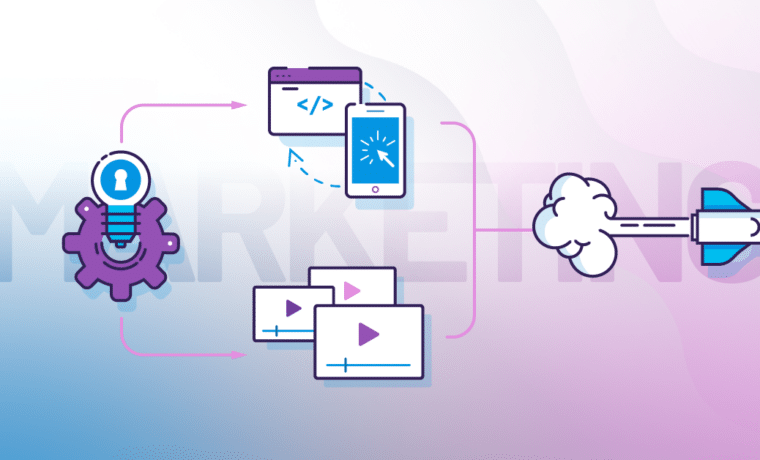Creating Value with RevOps

May 10, 2024 3 min read
You’ve probably heard the trending term Revenue Operations, also known as RevOps, in your marketing circles. You may be wondering what all the fuss is about, how your organization gets there, and what it means for marketing.
As you know, the purpose of any marketing investment is to produce revenue. It’s to make target audiences aware of your offering and entice them to buy it, hopefully leading to a lasting relationship with the purchaser.
The Relationship between RevOps and Customer Lifetime Value
Historically, the success of many marketing efforts has been measured by key performance indicators (KPIs) that a marketing team can own, like impressions, sessions, leads, and conversions. However, the acquisition cost is only one piece of a customer’s lifetime value.
There are several other connections with customers that can impact that lifetime value, but it’s often hard for organizations to measure the various touchpoints. Those touchpoints happen in different departments and have different metrics.
This is where RevOps comes into play. Marketing starts a customer’s journey. But the customer’s experience, and impact on lifetime value, extends to sales, customer service, and even product development. By integrating the practices and tools of these areas, RevOps breaks down the performance and metric silos between the different departments, allowing for a more holistic view of the customer and comprehensive and efficient planning that supports the success of the whole organization.
How do You Create a RevOps Strategy?
Here are a few tips to help move you toward a RevOps future:
- Assign a RevOps “Champion” – For many organizations, this is a significant change to business as usual. Titles with Revenue Operations are among the fastest growing on LinkedIn. Whatever you call the position, assigning a champion is one of the first steps forward. The ideal candidate would have a thorough understanding of the organization, different roles and responsibilities, and critical customer touchpoints.While RevOps sounds like it could be a financial function, marketing roles may be better suited to lead this effort. Marketing teams often have lines of sight into various functional areas to promote products and services. For example, marketing provides information to customer service teams to ensure approved, branded language is available to manage calls. Marketing supports sales efforts with promotional materials.
- Design a Clear RevOps Plan – Several organizational functions need to align to maximize customer lifetime revenue. A clear, concise plan with defined metrics ensures the key players are all rowing in the same direction. The champion and team must understand the revenue flow and what interactions can impact overall success. The plan should also consider existing KPIs among different functional areas and identify which work and don’t work in a RevOps environment.
- Commit Resources to Revenue Operations – RevOps leans heavily on technology to remove silos and broaden the line of sight into mission-critical information across teams. Stand-alone systems and processes previously put into place don’t necessarily work in this new environment. Housing data in centralized RevOps tech stacks where the right people can access the right information enables teams to be aligned. The investment in the technology allows the champion to map out a long-term plan for sustainable progress.
How Can I Get Started With RevOps?
A handy way to get started in your approach to RevOps is to consider three main “pillars”: People, Process, and Platform.
People: A successful RevOps plan requires a new way of thinking across all functional areas of an organization. Collaboration between teams is essential, as is an openness to changing long-standing hierarchy, expectations, and performance metrics. A clear plan that proves how increased organizational revenue can be achieved can serve as the cornerstone for this work.
Process: Consider all of the ways your customers interact with your organization. From there, identify any opportunities to make improvements that support long-term customers. You can also see if any competing priorities within the different departments might negatively impact the customer experience, and lean on collaboration under the “People” pillar to find solutions.
Platform: What kind of changes, improvements, or upgrades do you need with your current technology platform to effectively manage a RevOps model? From data analytics to workflow automation to systems integration, having the right technology will make or break a RevOps model. Technology can be a significant investment and may need to be a phased implementation toward the long-term goal.
A RevOps approach can drive long-term success for organizations by prioritizing customers’ positive experiences, aligning the right teams with the right information at the right time to improve those experiences, and expanding metrics to include a holistic view of a customer. At Blue Flame Thinking, we have been leading clients toward this path for some time. Part of our Discovery process includes bringing together a variety of department leads to learn their needs, resources, and challenges. Having this understanding, coupled with our expertise in marketing technology stacks, allows us to uncover ways to leverage various customer touchpoints and identify proactive shifts to drive increased revenue.
Connect with us to learn more
We can help you optimize your marketing approach for RevOps.
Get Connected




